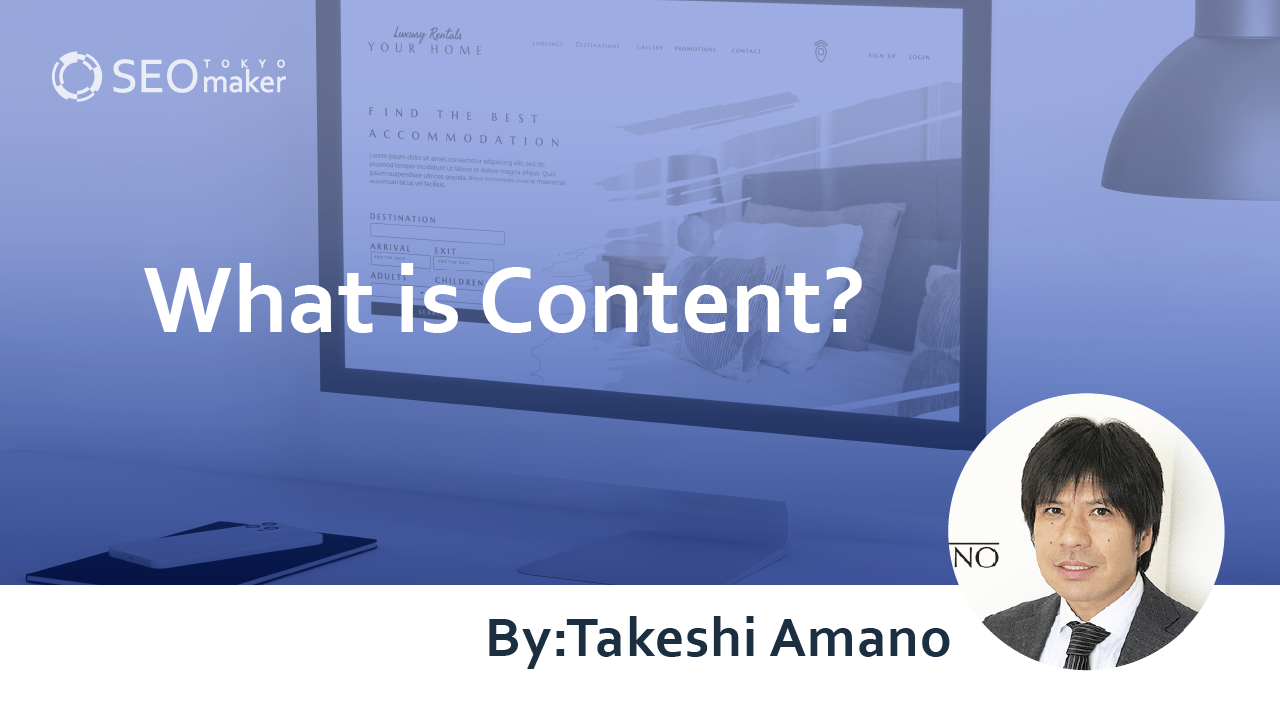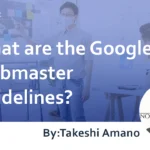What is Content? A Clear Explanation of Its Meaning and What Makes Quality Content
contents

Currently, content marketing has become globally popular and is now considered a fundamental aspect of marketing. Content marketing refers to a marketing strategy that aims to turn audiences into fans and then customers through the use of content.
The term “content” is used in various ways within the web industry, which can make its meaning somewhat unclear to many.
In this article, we will explain the basics of content online and how to create high-quality content. Please use this as a reference.
What is Content?
Content, translated as ‘Nakami’ in Japanese, in the world of web marketing, refers to the ‘substance of information.’
Specifically, the term ‘content’ is used to describe the overarching offerings of services such as websites, applications (apps), and social networking services (SNS). At the same time, it may also refer to individual items like text, videos, and images.
Related Article: Content Explained for Beginners
Origin of the Term ‘Content’
The term ‘content’ began to be used around the 1990s.
Originally, the term was popularized by Herbert Marshall McLuhan, a Canadian scholar in English literature, who stated in his writings that ‘the content is the media, and the media is the message.’
This means, in simpler terms, that information broadcasted by television and newspapers was referred to as content. Furthermore, not only TV programs and newspaper articles but also television commercials and newspaper advertisements are sometimes considered content.
Legal Definition of Content
In Japanese law, ‘content’ is defined as follows.
“In this law, ‘content’ refers to movies, music, plays, literature, photography, comics, animation, computer games, and other combinations of characters, graphics, colors, sounds, movements, or images, or information related to these, provided through computers (programs that are commands to computers and are combined to achieve a particular result). It pertains to those creations that are the result of human creative activity and fall within the scope of culture or entertainment.
Citation: Law Concerning the Creation, Protection, and Utilization of Content
In simple terms, this law defines ‘content’ as ‘creative works made by people for education or entertainment.’
Types of Content
In recent years, with the advancement of digitalization, content has also been influenced. From the perspective of web marketing, content is distinguished as follows.
- Web content
- Digital content
- Mobile content
Each of these will be explained in detail.
Web Content
Web content refers to information and content published on the web. Specifically, it includes a variety of formats such as websites, videos, slides, and PDFs (Portable Document Format). Web content often serves as the face of companies and organizations and includes social media as part of its scope.
Digital Content
This refers to content that contains unique creativity.
- Movies
- Music
- Anime
These are distributed via the internet or provided through media such as DVDs or Blu-rays. With the advancement of digital technology, digital content also encompasses the latest technologies like 3D imaging and VR (Virtual Reality) or AR (Augmented Reality).
Mobile Content
Refers to content used on mobile devices such as smartphones and tablets.
- Applications
- Games
- Social networking services
- Websites optimized for mobile
With the widespread adoption of smartphones, mobile content has rapidly evolved. Many companies now offer their own apps, create mobile-friendly websites, and establish social media accounts.
The Importance of Content
Recently, content marketing, which involves leading consumers to purchase products or services through content, has gained prominence. This trend is backed by the following factors.
- The web has become essential in daily life
- There is a diversification of content needs
Related Article: What is Content Marketing?
The Era When the Web is Essential to Life
The proliferation of smartphones and tablet devices has made the web indispensable not only in personal life but also in the business world.
According to the “Survey on Communication Usage Trends” published by the Ministry of Internal Affairs and Communications in July 2022, the number of internet users in Japan continues to rise, with the internet usage rate among individuals reaching 82.9% in 2021.
Citation: 2022 Edition Information and Communications White Paper, Section 8: Trends in Digital Utilization
In such a society, most people use the internet. For businesses, it is crucial to increase touchpoints with customers to enhance their profits. Therefore, providing content on the web to spark interest in a company’s products or services is emphasized.
Related Article: What is a Touchpoint?
Diversification of Content Needs
The evolution of digital technology has led to an increase in the variety of content available on the web. Consequently, the needs of general consumers for content have also diversified.
For example, imagine Person A, whose hobby is watching YouTube videos. Thus, Person A accesses YouTube daily to enjoy video content. On the other hand, Person B’s hobby might be reading articles on websites. While Person B accesses YouTube less frequently, they search for various keywords daily to read articles on different websites.
If a company wishes to turn these two individuals into customers, it would need to prepare two types of content—web articles and videos—to create customer touchpoints.
The Ideal Content from a Customer’s Perspective
Here, we will discuss what constitutes ideal web content from a customer’s perspective. The main elements are as follows.
- Solves explicit problems or needs
- Solves latent problems or needs
- Makes one want to share it with others
Each of these will be explained in detail.
Solves Explicit Problems or Needs
A critical concept in content marketing is understanding ‘who the customers are and what kind of content they are looking for.’
Related Article: What is Content Marketing?
Before digitalization, content marketing involved companies unilaterally throwing their products or services at customers. However, in the digital age, customers actively access information and scrutinize it.
Due to such changes in customer behavior, marketing has shifted towards content that satisfies customers’ problems and needs. Therefore, content that solves explicit problems or needs is appreciated by customers.
Solves Latent Problems or Needs
While addressing explicit needs is important, content that solves latent problems or needs is also crucial. To identify these latent needs, you must develop a detailed customer persona. For example, a person who needs a lighter isn’t just looking for a lighter; they need fire.
Moreover, creating multiple customer personas can help attract more customers because not all target customers think the same or follow the same purchasing process.
Start by creating content for one customer persona, and as you become accustomed, develop the next persona.
With the prevalence of social media as a form of content, anyone can now broadcast and spread information. In such cases, customer word-of-mouth becomes very important.
For example, if a company creates content that customers want to share, and various customers spread it, the company can acquire new customers without any additional effort.
The Ideal Content from a Search Engine’s Perspective
Next, let’s discuss what constitutes ideal web content from a search engine’s perspective. The main elements are as follows.
- Solves the customer’s problems
- Meets the criteria set by search engines
Related Article: What is a Search Engine?
Each will be explained in detail.
Solves the Customer’s Problems
Content that solves a customer’s problems is also considered ideal by search engines. Google uses a search algorithm that prioritizes user convenience. Therefore, content aimed solely at ranking higher but of poor quality may be penalized.
Meets the Criteria Set by Search Engines
Content that meets the criteria set by search engines is considered ideal. The elements of evaluation criteria for Google’s SEO measures are as follows.
- Use of keywords
- Attractive titles and headers
- Providing reliable information
- Implementation of internal links
These are the basic elements for SEO evaluation. There are various others, such as acquiring backlinks and using primary sources.
Related Article: What is SEO?
Tips for Creating Compelling Content
Finally, here are some tips for creating compelling web content.
- Clearly define your target persona
- Thoroughly understand the concerns of your target
- Differentiate your content based on competitor research
- Continuously research and update after publication
Related Article: How to Create High-Quality Content
Clarifying the Target Persona
To create good content, it is essential to have a clear target persona. Without setting a target for the content you create, it becomes challenging to effectively communicate your company’s intentions and messages. When setting a target persona, be as detailed as possible, considering attributes like age, gender, profession, and hobbies. This precision makes it easier to identify the target’s concerns in the next step.
Identifying the Target’s Specific Concerns
Once you have clearly defined your target, the next step is to identify their concerns in detail. From the potential concerns that emerge, pinpoint the fundamental, explicit concerns. This reason for search is known as search intent.
Understanding search intent provides clear guidance on what content should be created.
Related Article: What is Search Intent?
Differentiating Based on Competitor Research
Once you have a direction for your content, proceed with competitor research. Look at what information and services the top-ranking competitors are providing and who their targets are.
This helps you discover unique aspects of your business that are not present in your competitors.
Continuously Rewriting After Publication
Content creation does not end with publication. If the page views (PV) are not increasing, action is needed. For instance, if new information becomes available in the genre your content covers, it would be erroneous to continue without updating the published content.
Therefore, after publication, keep checking the PV and share counts and repeatedly revise the content.
Related Article: What is PV?
Related Article: How to Proceed with Rewriting
Content FAQs
We present some frequently asked questions about content in an FAQ format.
Q: What is meant by ‘content’?
Answer) In a broad sense, ‘content’ refers to various things, thus depending on the speaker, it can mean different things.
For example, in the web industry, the following are referred to as content.
- Websites
- Social media platforms
- Applications
Furthermore, not just these platforms, but also the items contained within them can be referred to as content.
- Web pages
- Posted comments
- Advertisements
- Text data
- Image data
- Video data
- Audio data
Q: What are synonyms for ‘content’?
Answer) In Japanese, ‘content’ can be replaced with terms like ‘Nakami’ or ‘information content’.
However, this is just a direct translation into Japanese. Essentially, the term ‘content’ can be substituted by what it refers to.
For instance, if ‘content’ refers to a web page, then ‘web page’ can replace the term ‘content’.
Q: What is a ‘content product’?
Answer) A ‘content product’ refers to content that is sold.
Content created for profit purposes is called a content product. Here are the examples.
- Paid video data
- Paid applications
- Chargeable data within an application
In terms of analog content, the following are examples.
- DVDs or Blu-ray discs of movies
- Music CDs or records
- Gaming consoles or software
Summary
This article has outlined what constitutes content and how to create appealing content. Content marketing is being utilized by both companies and individuals, promising long-term customer acquisition and brand recognition. To create compelling content, it is crucial to clearly define your target persona. From there, identify their concerns and create unique content for your company.










![What is a Description? Explaining the Meaning, Writing Style, and Changing Word Count – [2023 Edition]](https://www.switchitmaker2.com/en/wp-content/uploads/2024/09/what-is-description.webp)










